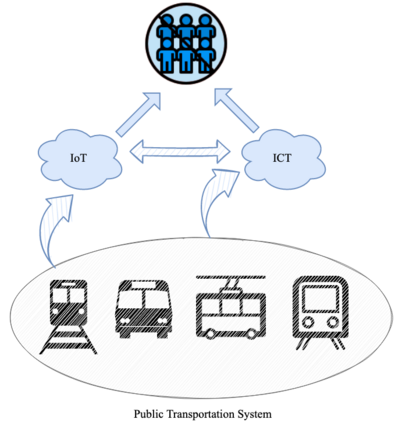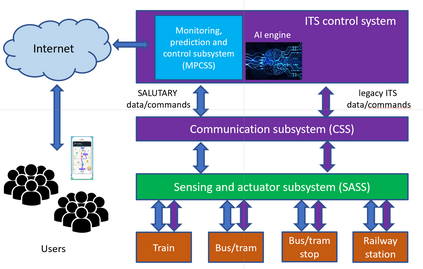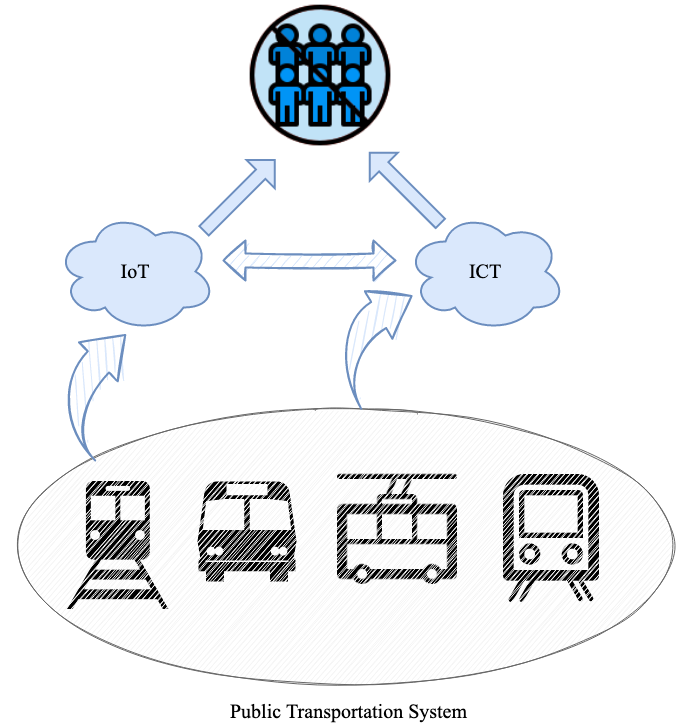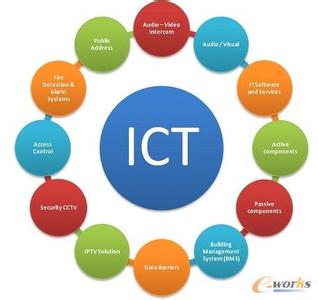Avoidance of crowding situations in public transportation (PT) systems is crucial to foster sustainable mobility, by increasing the user's comfort and satisfaction during normal operation, as well as to manage emergency situations, such as pandemic crises as recently experienced with COVID-19 limitations. This paper presents a comprehensive review of several crowd detection techniques based on Internet of Things (IoT) technologies, which can be adopted to avoid crowding in various segments of the PT system (buses/trams/trains, railway/subway stations, and bus stops). To discuss such techniques in a clear systematic perspective, we introduce a reference framework called SALUTARY (Safe and Reliable Public Transportation System), which in our vision employs modern information and communication technologies (ICT) in order to: (i) monitor and predict crowding events; (ii) adapt in real-time PT system operations, i.e., by modifying service frequency, timetables, routes, and so on; (iii) inform the users of crowding events by electronic displays installed in correspondence of the bus stops/stations and/or by mobile transport applications. It is envisioned that the new anti-crowding functionalities can be incrementally implemented as an addon to the intelligent transportation system (ITS) platform, which is already in use by major PT companies operating in urban areas. Moreover, it is argued that in this new framework, additional services can be delivered, such as, e.g., on-line ticketing, vehicle access control and reservation in severely crowded situations, and evolved crowd-aware route planning.
翻译:避免公共交通系统拥挤局面对于促进可持续流动至关重要,通过提高用户在正常运行期间的舒适度和满意度,以及管理紧急情况,例如最近因COVID-19限制而经历的流行病危机,对在公共交通系统(PT)系统中避免挤塞情况至关重要,本文件全面审查了基于互联网(IoT)技术的若干人群探测技术,这些技术可以用来避免挤入PT系统各部分(公共汽车/火车/火车、铁路/下行站和公共汽车站),为了从明确的系统角度讨论此类技术,我们引入了一个称为SALUTAY(Safe和可靠的公共交通系统)的参考框架,在我们的愿景中采用现代信息和通信技术(ICT),以便:(一) 监测和预测拥挤事件;(二) 适应实时PT系统操作,即通过修改服务频率、时间表、路线等;(三) 向用户通报以电子显示方式安装在公共汽车站/站和(或)移动运输应用程序中进行挤压的事件。








